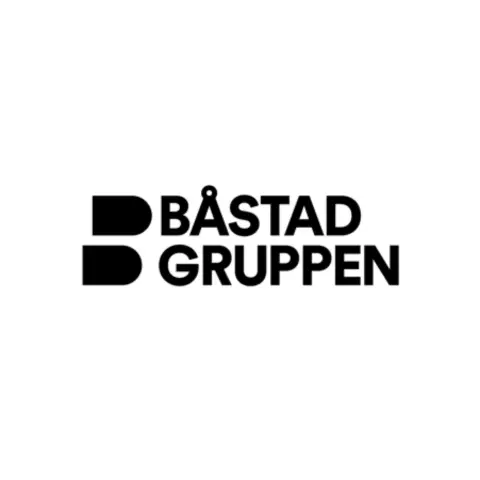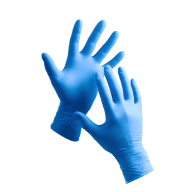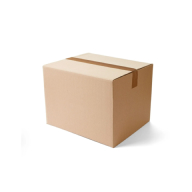ATG MaxiFlex Cut Kevlar 3D Gloves
Båstadgruppen
visit storeProduct description
MaxFlex® Cut™ Kevlar™ 34-1743 is thin, ventilated, durable and cut-resistant skin-friendly glove and perfect fit made of Polyester / Nylon / Kevlar ™ and dipped in Nitrile foam, for dry environments. EN388: 2016 + A1: 2018: 4331D, EN 407: 2020: X1XXXX, OekoTex 100, Skin Health Alliance. Color: Black
Identifies the material applied to the glove's exterior that enhances grip, chemical resistance, and durability while complementing the cut-resistant core material.
Indicates the glove's visual appearance, which may signify specific applications, enable color-coding systems, or enhance visibility in work environments.
Suited for diverse tasks, offering reliable cut protection without sacrificing dexterity. Balances safety and flexibility for various applications.
Offers complete hand coverage, including full finger protection from cuts and abrasions. A versatile style suitable for various tasks and environments.
Enables seamless interaction with touch screen devices without removing gloves. Maintains productivity and protection in tech-integrated work settings.
Defines how the glove secures at the wrist, affecting comfort, debris protection, and ease of donning/removal. Options vary in security and coverage.
- Cut Resistant
- Hand Protection
Request a free sample
Test first and buy later. Visit any product page to request your free sample.
Standards and labels
EN 407:2020 is a European standard that specifies the safety requirements for protective gloves for thermal risks. It sets rules for the design, construction, and testing of gloves that protect users from heat and fire. Testing includes measurements of contact heat, convective heat, radiant heat, small splashes of molten metal, and flame resistance. The standard also includes requirements for labeling and instructions for use. This standard is an updated version of EN 407:2004, it includes new requirements, testing methods and performance levels to ensure that the gloves provide better protection against thermal risks such as heat, fire and molten metal splash.
Test results
Heat Contact Level 1EN 407:2020 sets the standard for evaluating the performance of protective gloves against thermal risks. A result of Level 1 for Heat Contact indicates minimal protection, where the glove material can delay the transfer of heat from a surface at 100°C for at least 15 seconds. This test result is established through method EN ISO 12127-1, where a glove sample is exposed to a hot surface at a specified temperature and the time is measured until the glove's interior temperature rises by a certain degree. For procurement professionals, a Level 1 rating suggests suitability for environments with low heat risks, providing brief contact protection that can be crucial for tasks involving occasional, quick contact with warm objects without continuous exposure to high heat.
Heat Convection Level XIn the context of EU standard EN 407:2020, a test result signifying Heat Convection Level X indicates that the protective glove tested either did not meet the minimum requirements or was not tested under this criterion. It's vital to interpret such a label as the absence of certified protection against convection heat, which may involve exposure to energetically transferred heat via fluids or gases. The test method used to determine the Heat Convection Level involves measuring the time it takes for heat to transfer from a heated aluminum cylinder through the glove material to the inner surface where it might contact skin, as specified in the standard. The testing apparatus measures the rise in temperature inside the glove to assess its heat insulating properties. Practical implications of achieving 'Level X' in convection heat test suggest that the product is either unsuitable for environments where convection heat is a risk, or it necessitates further testing to ascertain its protective capabilities in specific conditions, crucial information for procurement decisions in safety-related industries.
Radiant Heat Level XEN 407:2020 is a European standard that sets the requirements for protective gloves to defend against various thermal hazards, including radiant heat. The designation Radiant Heat Level X indicates that the gloves have not been tested for this specific type of protection, or they did not meet the minimum criteria established by the standard for resisting radiant heat. This means that these gloves are not certified for protection against radiant heat, which involves the transmission of heat through infrared rays from a heat source without direct contact. The lack of a specific radiant heat protection level suggests that users should not rely on these gloves for tasks where significant exposure to radiant heat is expected. Instead, these gloves might be suitable for other types of thermal risks for which they are certified, ensuring users select the appropriate type of protective glove based on the specific hazards present in their working environment. This classification assists in preventing inappropriate glove use and enhancing worker safety by clearly indicating the limitations of the glove's protective capabilities.
Molten Metal Resistance Level XEN 407:2020 is a European standard that provides specifications for protective gloves to safeguard against thermal risks, including the exposure to molten metals. The designation Molten Metal Resistance Level X indicates that the gloves have not been tested for this specific risk, or they failed to meet the minimum requirements set out in the standard for protection against molten metal splashes. This means that the gloves are either unsuitable for use in environments where there is a risk of contact with molten metals, or additional testing is required to determine their suitability. Typically, such a classification implies that the gloves should not be used for handling molten metals and should only be considered for other types of thermal risks specified in the standard, where molten metal exposure is not a concern. This classification helps in ensuring that users select the right type of glove based on the specific hazards present in their working environment, thereby preventing inappropriate use and enhancing safety.
Metal Splash Resistance Level XThe EN 407:2020 standard specifies different levels of protection for gloves against thermal risks, including metal splash resistance. A result marked as 'Level X' under this standard symbolizes that the glove material either did not meet the minimum requirements for testing or that no specific test was conducted for this hazard. The test for Metal Splash Resistance in EN 407:2004 involves exposing the glove material to molten metal splashes to determine how much molten metal is required to heat the glove material to a degree that it would cause risks to the wearer. The practical implication of a 'Level X' rating is that gloves marked as such should not be relied upon for protection against risks of molten metal splashes, making them unsuitable for use in environments where exposure to this hazard is likely.
Burning Behaviour Level XThe EN 407:2020 standard's specified test result Level X for Burning Behaviour indicates that either the test was not conducted or the sample was not applicable for testing under this specific parameter. Consequently, no performance level can be assigned according the criteria set in the standard. This finding is part of a broader testing protocol where Thermal Hazards Protection levels are determined for materials, especially used in gloves intended for heat handling. The test method evaluates the material’s ability to resist catching fire and its rate of burning. To assess burning behavior, the sample is exposed to a small flame, and observations are made on whether it ignites, how long it burns after the flame is removed, and how it extinguishes. Practical implications for products that receive a Level X for Burning Behaviour could include uncertainty in performance when faced with thermal hazards, thus impacting their suitability for jobs involving high temperatures or direct contact with flames.
EN 388:2016 is a European standard for measuring the performance of protective gloves against mechanical risks (abrasion, cut, tear, and puncture). The standard includes test methods and performance requirements for gloves to be considered compliant. Test results are reported using a series of four numbers, each representing the performance level achieved in one of the tests.
Test results
Abrasion Resistance Level 4EN 388:2016 uses a specific test method to measure abrasion resistance of safety gloves; the gloves’ material is subjected to sandpaper under pressure to observe the number of cycles needed to wear through the material. Level 4 in this standard indicates that the material withstood 8,000 cycles before a hole was made. Practically, this means that gloves rated at Level 4 for abrasion resistance offer very high resilience against wearing through, making them suitable for tasks involving significant contact with rough surfaces .
Tear Resistance Level 3EN 388:2016 is a European standard that specifies methods for testing the resistance of protective gloves against mechanical hazards, such as abrasion, cuts, punctures, and tearing. The Tear Resistance Level 3 indicates a high level of protection, where the gloves can withstand significant tearing forces. The test for determining tear resistance involves subjecting the glove material to a mechanical force until it tears, measuring the force required to initiate and continue the tear. For Level 3, gloves must withstand a force between 50 to 75 Newtons before tearing. This robust level of tear resistance is particularly suitable for demanding environments where gloves are exposed to activities that might cause extensive wear or tearing, such as handling heavy or rough materials, industrial assembly, and construction tasks. Gloves with this level of tear resistance provide enhanced durability and safety, reducing the risk of injuries and increasing the longevity of the glove in tough working conditions.
Puncture Resistance Level 1The European standard EN 388:2016 addresses the puncture resistance of protective gloves, with puncture resistance classified from Levels 1 to 4. Specifically, a Level 1 result indicates minimal puncture resistance. This level of resistance is determined by a test involving a standardized stylus with a specified diameter and force. During the test, the stylus is pressed against the material with a force up to 20 Newtons to assess how well the glove can withstand penetration. A Level 1 rating signifies that the glove provides basic protection against small punctures or stabs, appropriate for areas with minimal risk. Practical implications for this test result suggest the gloves are suitable for light tasks where major risks of punctures are not anticipated, but are not adequate for handling sharp tools or heavy equipment where higher penetration resistance would be necessary.
Cut Resistance, ISO 13997 Level DCut Resistance according to the ISO 13997 result under the European Standard EN 388:2016 quantifies the level of resistance a material offers against cutting where the required force to cut through the protective material is between 15 and 21 Newtons. This test method involves applying a straight-edge blade under load over the material's surface and determining the load at which the blade cuts through at a standard length of cut. This stringent testing is critical for products like protective gloves or garments, where high cut resistance ensures better safety and durability in environments where sharp objects are handled. Understanding and adhering to this standard helps procure suitable protective gear that meets safety requirements and offers expected protection for specific risk exposures .
Cut Resistance, Coup Test Level 3The standard EN 388:2016 specifies Cut Resistance for protective gloves, among other standards. A result of 'Level 3' on the Coup Test means that the gloves are certified to withstand at least 5 but less than 10 cycles before being penetrated by a blade. This is based on a specific scale from Level 1 to Level 5, where Level 5 offers the highest protection against cuts. The Coup Test involves using a rotating circular blade under a fixed load moving back and forth across the glove material until cut through occurs. The number of cycles the blade can go through before cutting the fabric determines the cut resistance level. In practical terms, a Level 3 rating in cut resistance indicates that the gloves offer suitable protection for activities involving handling of materials with some sharp edges, such as construction or light assembly tasks, providing a balance between dexterity and cut protection. This level is typically recommended for tasks where there is a moderate risk of cuts and slashes.
CE Marking is a label that shows a product meets certain safety and environmental standards set by the European Union. To get the CE Marking, a company must test and certify their product meets these standards. CE Marking is required for many products sold in the EU, including electronics, machinery, toys and medical devices. It helps ensure that products are safe for consumers and the environment, and allows for easy trade within the EU.
Oeko-Tex Standard 100 is a product certification program for textiles, which is awarded by the Oeko-Tex Association. This program verifies that the textile products are free from harmful chemicals. To be able to use the Oeko-Tex Standard 100 label, a product must meet certain requirements set by the Oeko-Tex Association which include limits on the levels of harmful substances such as pesticides, heavy metals, and formaldehyde. The textile products are inspected and certified by Oeko-Tex, they can use the Oeko-Tex Standard 100 label on their packaging to show that they are free from harmful chemicals. This certification is for all types of textiles, from raw materials to finished products, and it is globally recognized.
Båstadgruppen delivery terms
Free delivery for all Båstadgruppen products
185,90 kr
Free delivery
Sold in units of one pair
Need larger quantities?
Other products you may like
Recently viewed
Need help?
Get help from our experts
Other products you may like
Similar products you may like
Autonomous sourcing platform
The most efficient way to source and order supplies for your operations
Sourcing
Ordering
List products you’re looking for and we’ll find the best products and prices for you – all for free.
Need help?
Get help from our experts



